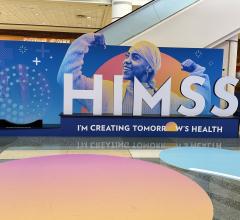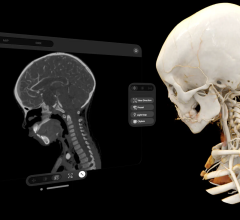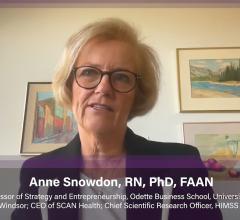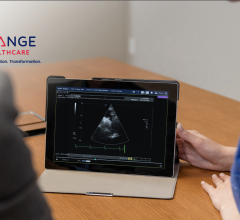
Sunny Sanyal
What factors are driving increased adoption of healthcare information technology, otherwise known as HIT?
Clinical IT and technology in general are getting a lot of focus from the government, from the industry, from clinicians — and the drive to make healthcare safer is what's driving overall growth of clinical IT and technology adoption.
What we are seeing in cardiology, with the aging of the population, is an increase in cardiac-care patients with fewer staff. In general, there is a staffing shortage of healthcare workers, and cardiology is no exception. Along with this situation there is an enormous amount of push for error reduction. The bottom line is having better access to real-time clinical information from multiple sources at the point of care — that’s what is going to drive the reduction in errors.
Without appropriate automation this situation will deteriorate, and patient care will deteriorate. That is the primary driver for automation in the cardiovascular department: to be able to serve the patient better; to get the clinical automation able to serve patients better with fewer cardiologists and clinical staff.
The second big driver is to improve the quality of care delivered to the patient by accelerating how quickly you can get that patient through the cath lab and how tightly you tie the workflow between the cath lab and the OR — how quickly and efficiently can you get that patient from the emergency room into either the OR or the cath lab and then through the recovery process? Better patient care is being driven by better access to these systems, better diagnostic systems, better scheduling and patient flow.
Third is the requirement to create longitude in electronic patient records. A few years ago it was rare for a clinician to have a lot of patient history available when doing a follow up — it would have been very difficult for the cardiologist to have access to that. But with the digitization of the modalities and the sources of data, it is becoming more feasible to be able to create longitude in a patient's record. The clinical values are fairly self evident.
This, too, is driving hospitals, cardiology departments and cath labs in the hospital to automated IT systems.
What are the inherent differences between clinical image and information management systems (CIIMS) and picture archiving communication systems (PACS)?
In the cardiology department, you need systems that will capture and record what is going on during the procedures and you need systems that will capture other clinical data for the patient from different sources. It is a very clinically rich and active environment. What you really need is a full blown clinical information system, but one that is even more complex.
What makes the cath lab different is the need to combine all this clinical data with the imaging information that comes out of the imaging modalities. You have cath lab images, hemodynamics data, lab results, nuclear medicine results and echocardiography — all this needs to be brought together so that the cardiologist can perform the procedure and generate the correct report. All this integration is what we call the cardiovascular information system. Some people have traditionally seen the IT needs for cardiology as just imaging, but we believe that imaging is a small part of what goes on in a cath lab. It is a clinical environment that is supported by several different kinds of data and images.
PACS deals with acquisition, storage and routing of image information. When you have a machine inside a cath lab that is capturing images of the heart, those images need to be archived and stored somewhere. That is what you use a cardiology PACS for — you archive those images and pull them up from the cardiologist's workstation as he needs them. Our cardiologist's CVIS workstation can pull up data from the cardiology PACS, plus all the clinical information for the patient from other sources.
It creates a cardiologist’s cockpit with all different sources of information brought together, converged in one place.
How does dictation come into play with McKesson’s Horizon cardiovascular information system (CVIS)? Is dictation during a cath lab procedure still necessary?
Dictation is not a bad thing. But the problem with dictation is that it is narrative. Doctors have always liked dictation because of the contextual narrative information that they like to maintain — they can go back to it in the future to understand what they did with a patient.
We do support dictation, but what the cardiology departments need is structured output on the back end. Our goal is to reduce the time it takes for cardiologists to produce the final report, to generate all the data and relate it to the case. We don't want cardiologists to spend more than five or 10 minutes after the cath lab study is done to wrap up their case.
In the process, what we have done is reduce the need for the cardiologist to dictate and manually put in information by collecting this automatically from the hemo systems. All the cardiologists really need to do is come in, sit down in front of the workstation, verify all the information, and if there is some additional dictation that they need to do, if they need to add a few comments, they can do that.
We are trying to reduce the need to have back-end transcriptions, back-end coders. Why, for example, should you have to have a coder sitting on the back end trying to figure out what inventory was used during this procedure? Every time somebody pulls out a piece of inventory from a cabinet, they should be able to scan its bar code and automatically manage that inventory, automatically update the bill and be able to capture that charge.
Can you tie the HIT adoption trend to the concept of Pay for Performance? What benefits will cath labs realize, in the P4P context, and what kind of pitfalls are going to hurt the laggers?
Pay for Performance in the healthcare setting is out there — everyone is talking about it, and it seems like it is imminent; the payers are taking an active role in driving it. What we have seen in cardiology supports that trend. For example, there are registries out there, such as the National Cardiac Data Registry (NCDR), which is now being increasingly required in a number of states.
We believe at some point in the future, there will be tiered reimbursement based on performance. To comply with these kinds of accreditation and certification requirements, it will be more critical for cardiology and cath labs to have IT systems that can report accurately, that can pull information from disparate sources.
That will become more and more critical, and today the process is very broken. Unless cardiology departments invest in IT systems, they either will not be able to comply with this type of reporting, make it very tedious and expensive, end up reporting incorrectly or all three. It will affect their financial outcome.
We believe that while it is good to put an IT system in the cath lab to improve the throughput and efficiency, and to make reporting easier and more accurate, eventually they will just have to do this or they will fall behind their peers.
What CVIS trends do you expect to grow in 2006?
Cardiology departments and cath labs have transcended from just image management and cardiology PACS to overall CVIS solutions. We are seeing a second wave of acquisition of these technologies and people are buying, but now they are buying with the intention of seeking out integrated clinical information systems for cardiology. That is one big trend: Standalone cardiology PACS is no longer really the IT solution. There is a big movement toward CVIS.
People are asking how information that is managed in the cath lab can be tied back to the broader clinical enterprise, since hospitals are digitizing their other clinical departments, whether it is emergency rooms or ORs — this coming year there will be a lot of demand for this.
The selection of a CVIS system is lining up more and more with the core IT strategy of the entire hospital.


 May 01, 2024
May 01, 2024 









